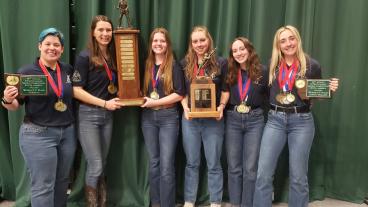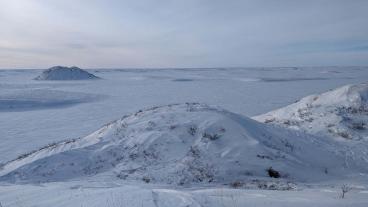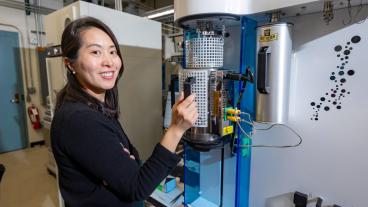Minerals and metals are at the foundation of modern technology-based societies. Each year, the average American uses about 25 tons of earth materials. Exploration for new resources is at the front end of the mining life cycle, with mining companies spending billions of dollars per year exploring for new metal and mineral resources yet often coming up empty.
Now, Colorado School of Mines researchers are teaming with Virginia Tech researchers, bringing together over 250 years of experience in earth resource research, to develop an integrated approach to locating, characterizing and visualizing mineral resources. Their goal is to boost exploration success rates and advance mining operations while cutting costs and minimizing both financial risk and environmental impact.
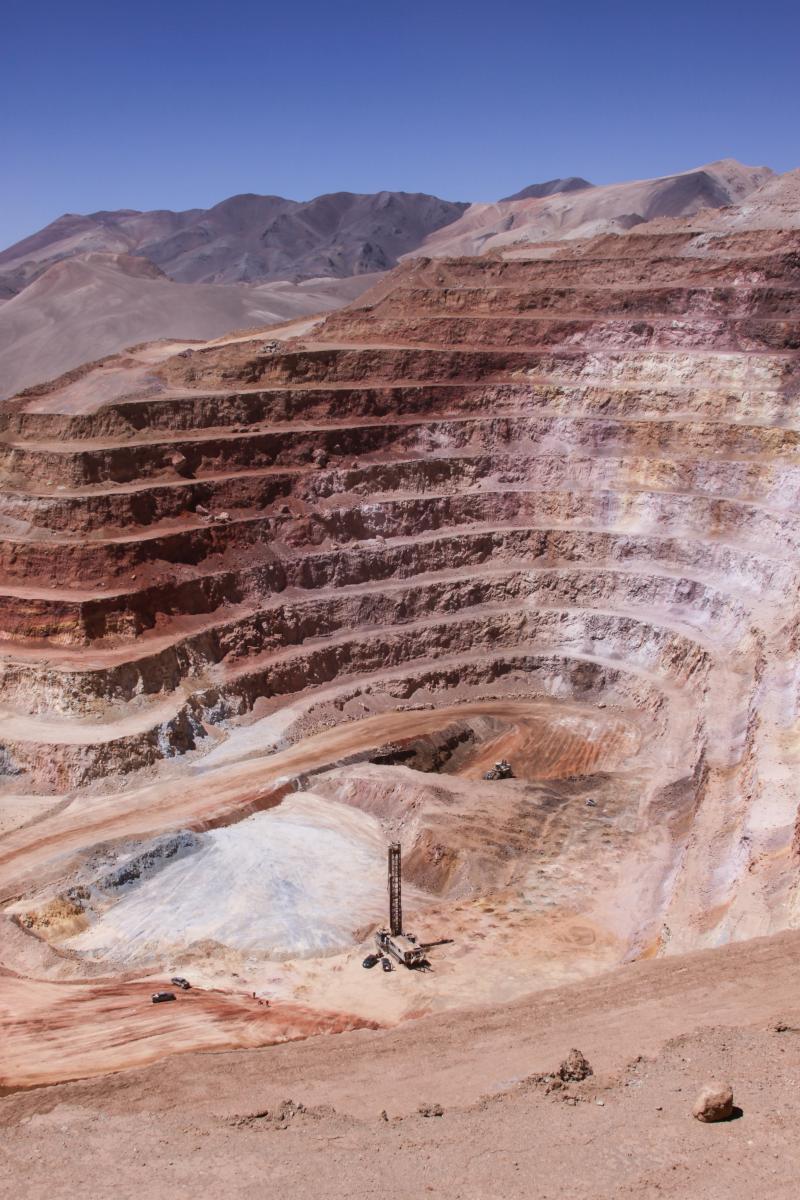 |
| An open-pit mining operation at the Veladero Mine in Argentina. |
The center has received early support from the National Science Foundation through a $15,000 planning grant to each institution. These planning grants will enable the Mines-Virginia Tech team and representatives from the exploration and mining industry to define a joint industry and university research agenda, consolidate support and develop a business plan under NSF’s Industry/University Cooperative Research Center Program. Launched in 1973, the I/UCRC program supports research and workforce development in various industry sectors by establishing and fostering cooperative, long-term innovative university-industry-NSF partnerships.
“The purpose and long-term vision of this center is directed toward research challenges in the development of 3-D subsurface geologic models for mineral deposits, with the ultimate goal of informing decision-making and minimizing geological risk in mineral exploration operations,” said Geology and Geological Engineering Professor Ric Wendlandt, Mines’ principal investigator on the project.
The Mines team includes 14 researchers from the departments of Geology and Geological Engineering, Geophysics, Applied Mathematics and Statistics and Mining Engineering. Professor Wendy Harrison and Associate Professor Thomas Monecke, both from the Geology and Geological Engineering Department, are co-principal investigators. At Virginia Tech, Math Professor Matthias (Tia) Chung leads a team of 12 researchers.
The consortium represents an ideal cross-disciplinary effort, balancing geological and geophysical exploration methods with essential mathematical and computational approaches and risk analysis perspectives.
The research team will explore innovations in measurements of chemical and physical properties of rock materials and improvements to integrating and scaling of diverse geological and geophysical data types. These improvements will help mathematicians, statisticians and computer scientists build more accurate tools for 3-D imaging and visualization of the Earth’s subsurface.
According to Monecke, who specializes in economic geology, the exploration and mining sector is unlike other industries. The time between onset of exploration to resource production and recoup of investment often exceeds 10 years.
“The mining business is a complex process, taking many years to develop a project from exploration to production and finally mine closure and reclamation. Successful modern mining operations generate wealth and employment for several decades, yet because failure at any step is prohibitively expensive, companies are slow in developing and adapting new technologies and often rely on business strategies proven to have worked in the past,” said Monecke. “Our center’s vision is to advance the digital revolution of the global exploration and mining industry during all stages of the mining life cycle—research in this area will be the stepping stone to transforming exploration and mining into an industry of the 21st century.”
The center will need industry support to receive full funding from the NSF. During the initial yearlong planning phase, Mines will recruit companies to join the consortium. “There are already 28 companies interested in working with us, in the long run looking to fund innovative fundamental research that will accelerate the mining sector forward,” said Wendlandt. “We’re very encouraged.”
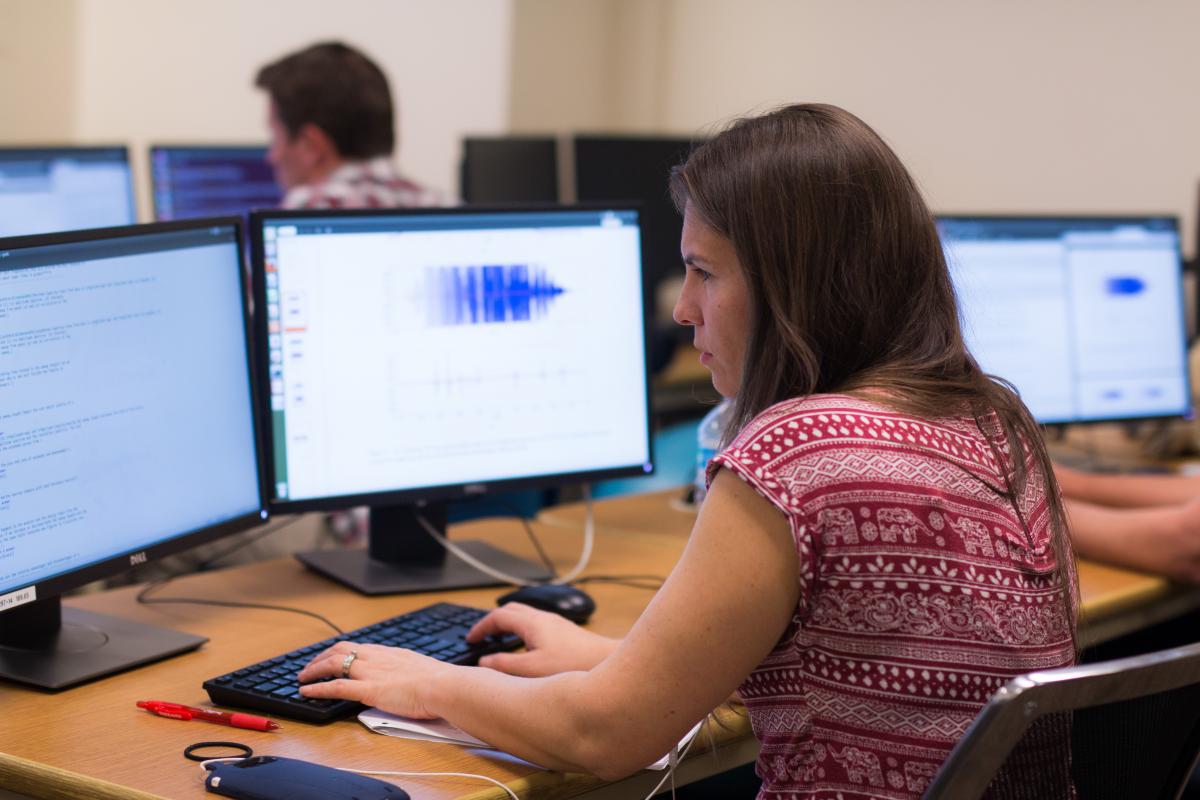 |
| A Mines geophysics student works with 3-D imaging software. |
“Mining is intrinsic to modern society’s transition to a sustainable existence,” said Ramona Graves, dean of the College of Earth Resources Science and Engineering. “The center’s projects will promote socioeconomic prosperity and help in reducing the environmental impact of the mining industry.”
The center will also be a major effort to prepare college graduates at both the undergraduate and graduate levels to move directly into the industrial workforce, explained Harrison, helping students make essential contacts in the industry even before they graduate. There is an emerging need in the mining industry for professionals who provide expertise in advanced computer-controlled equipment, computer modeling and data analysis that support the daily activity of a company.
“The Center for Advanced Subsurface Earth Resource Models, if successful in attracting members, would be the first geoscience-based program started under the 44-year-old NSF program,” said Harrison. Expectations for the planning year are to gain industry support for the Center’s operation plan, agree on research goals and initial projects and get individual companies to commit to joining the center.
This research is being made possible by NSF Grant 1650500.
Contact:
Agata Bogucka, Communications Manager, College of Earth Resource Sciences & Engineering | 303-384-2657 | abogucka@mines.edu
Mark Ramirez, Managing Editor, Communications and Marketing | 303-273-3088 | ramirez@mines.edu

